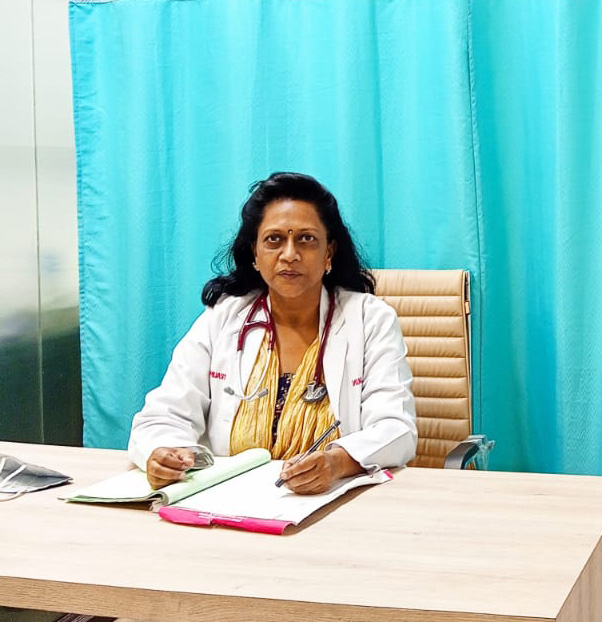Breast health is a critical concern for women of all ages, and the presence of a breast tumor or lump can be alarming. Dr Amita Jain, a top laparoscopic breast surgeon specialist in Delhi and Gurgaon, provides valuable insights into the nature of breast tumors and lumps, helping women understand the difference, the significance, and the steps to take when encountering these concerns.
What Is a Breast Tumor?
A breast tumor refers to a mass of abnormal cells that have grown uncontrollably in the breast tissue. Tumors can be benign (non-cancerous) or malignant (cancerous). Benign tumors, such as fibroadenomas or cysts, are not life-threatening and often do not require extensive treatment. However, malignant tumors are cancerous and need immediate attention.
Benign Breast Tumors:
Benign breast tumors, like fibroadenomas, are usually firm, smooth, and movable when touched. They are common in younger women and are not associated with an increased risk of breast cancer. Cysts, another type of benign tumor, are fluid-filled sacs that can vary in size and may be tender, especially before menstruation.
Malignant Breast Tumors:
Malignant tumors, on the other hand, are more dangerous. These tumors tend to be irregular in shape, hard, and immovable. They may be painless in the early stages, making regular self-examinations and mammograms crucial for early detection. Malignant tumors can spread to other parts of the body (metastasize), posing significant health risks.
How to Recognize a Breast Lump?
A breast lump is a general term for any localized swelling or bump in the breast tissue. Not all lumps are tumors, but any lump should be evaluated by a healthcare professional to determine its nature. Dr. Amita Jain emphasizes the importance of self-awareness when it comes to breast health.
Common Causes of Breast Lumps:
- Hormonal Changes: Hormonal fluctuations during the menstrual cycle can cause temporary lumps or breast tenderness.
- Infections: Infections such as mastitis, often seen in breastfeeding women, can cause painful lumps.
- Injuries: Trauma to the breast tissue can lead to the formation of lumps.
- Breast Cysts: Fluid-filled sacs that can vary in size and may fluctuate with the menstrual cycle.
When to Seek Medical Attention?
Dr. Amita Jain advises that any new lump, regardless of pain or size, should be evaluated by a healthcare provider. Although many lumps are benign, only a medical professional can accurately diagnose the nature of the lump. Early detection of breast cancer significantly increases the chances of successful treatment.
Diagnostic Procedures
To assess a breast lump or tumor, a series of diagnostic tests may be recommended:
- Mammogram: An X-ray of the breast to detect abnormalities.
- Ultrasound: Uses sound waves to differentiate between solid masses and fluid-filled cysts.
- Biopsy: A sample of the lump is taken for laboratory analysis to determine if it is benign or malignant.
Treatment Options
Treatment depends on the type and stage of the tumor. Benign tumors may require minimal intervention, such as monitoring or minor surgery. Malignant tumors often require more aggressive treatment, including surgery, radiation, chemotherapy, or a combination of these.
Understanding the nature of breast tumors and lumps is vital for early detection and effective treatment. Dr. Amita Jain emphasizes the importance of regular self-examinations and professional evaluations for any unusual changes in breast tissue. Remember, early detection saves lives. If you find a lump, don’t panic—but don’t ignore it either. Seek medical advice promptly.
You can also read our previous blog on Lumps In Your Breasts? They May Be Benign to gain more insights on the topic.

Dr Amita Jain is a surgeon with the highest degree of professional competence, precision and surgical craftsmanship. Performed all complicated general surgery procedures with in depth knowledge of invasive and few minimal invasive and onco surgical techniques. Underwent special training in trauma, executed various trauma-related complex life-saving neurosurgical procedures, reconstructed injured mangled limbs and performed vascular and reconstructive procedures with critical care.
Dr Amita Jain holds 28 plus years of rich experience in Trauma and General Laparoscopic Surgeries (including Gallbladder stone removal, appendix removal, hernia repair surgery, piles and fissure surgeries). She was the Professor Surgery of at the Army College of Medical Sciences and Base Hospital Delhi Cantt. In 1994 she was commissioned as Surgeon under the United Nations Mission in Congo. From 2020 to 2022, she worked with Bansals Hospital. Currently, Dr Amita Jain is the Senior Consultant, (Speciality: General and Laparoscopic Surgeon) at Artemis Lite Hospital, New Delhi and Sr. General and Laparoscopic Surgeon at Rainbow Children Hospitals, Malviya Nagar, Delhi.
